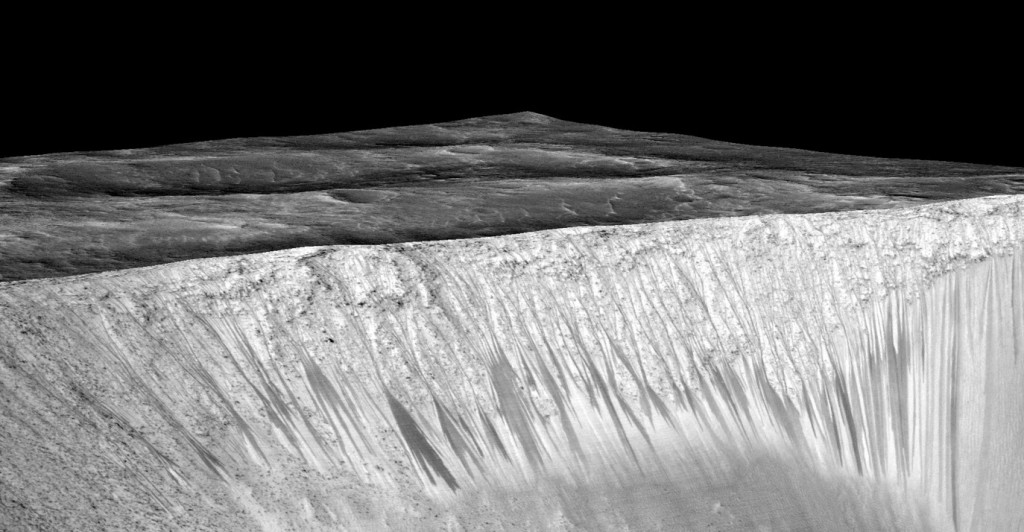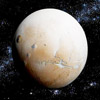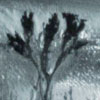Water, Ice, Microbes And More On Mars
“Our quest on Mars has been to ‘follow the water,’ in our search for life in the universe, and now we have convincing science that validates what we’ve long suspected,” said John Grunsfeld, astronaut and associate administrator of NASA’s Science Mission Directorate in Washington. “This is a significant development, as it appears to confirm that water — albeit briny — is flowing today on the surface of Mars.”
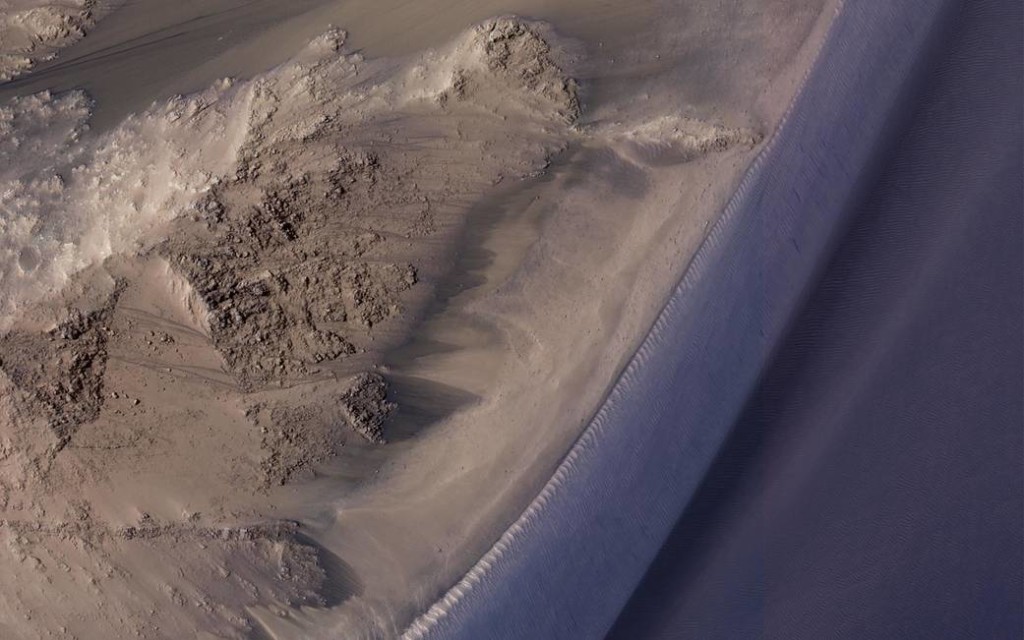 —————————————————————————————————-
—————————————————————————————————-
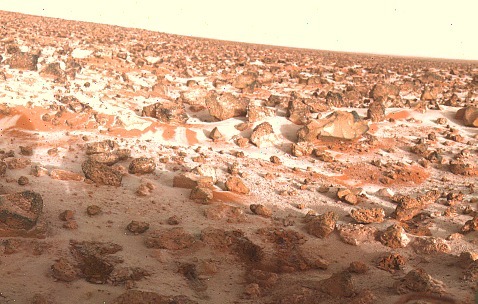 Ice Is Everywhere On Mars
Ice Is Everywhere On Mars
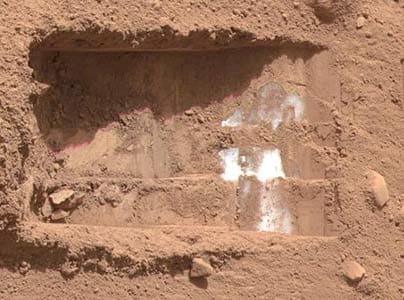 Frozen beneath a region of cracked and pitted plains on Mars lies about as much water as what’s in Lake Superior, largest of the Great Lakes, researchers using NASA’s Mars Reconnaissance Orbiter have determined.
Frozen beneath a region of cracked and pitted plains on Mars lies about as much water as what’s in Lake Superior, largest of the Great Lakes, researchers using NASA’s Mars Reconnaissance Orbiter have determined.
The deposit ranges in thickness from about 260 feet (80 meters) to about 560 feet (170 meters), with a composition that’s 50 to 85 percent water ice, mixed with dust or larger rocky particles.
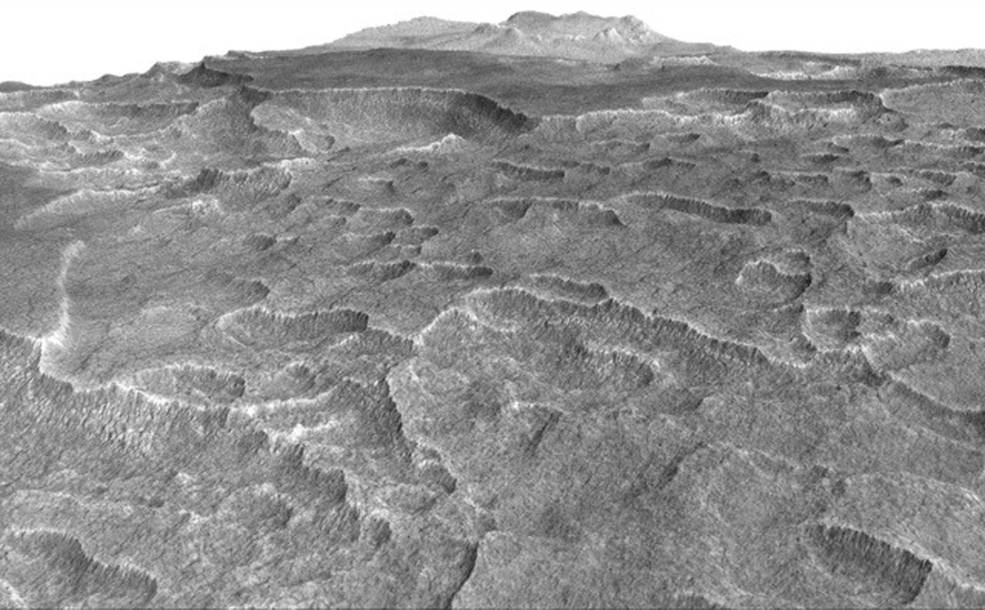
The name Utopia Planitia translates loosely as the “plains of paradise.” The newly surveyed ice deposit spans latitudes from 39 to 49 degrees within the plains. It represents less than one percent of all known water ice on Mars, but it more than doubles the volume of thick, buried ice sheets known in the northern plains. Ice deposits close to the surface are being considered as a resource for astronauts.
“This deposit is probably more accessible than most water ice on Mars, because it is at a relatively low latitude and it lies in a flat, smooth area where landing a spacecraft would be easier than at some of the other areas with buried ice,” said Jack Holt of the University of Texas, a co-author of the Utopia paper who is a SHARAD co-investigator and has previously used radar to study Martian ice in buried glaciers and the polar caps.
The Utopian water is all frozen now. If there were a melted layer — which would be significant for the possibility of life on Mars — it would have been evident in the radar scans. However, some melting can’t be ruled out during different climate conditions when the planet’s axis was more tilted. “Where water ice has been around for a long time, we just don’t know whether there could have been enough liquid water at some point for supporting microbial life,” Holt said.
—————————————————————————————————-
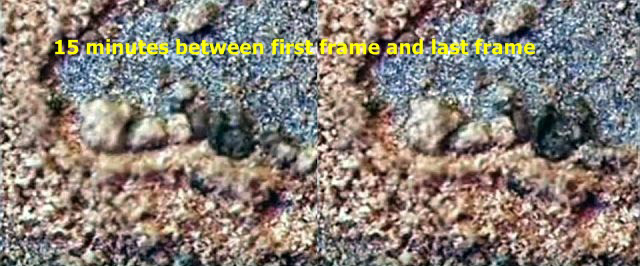 If There Is WATER And ICE Then There Should Be Life!
If There Is WATER And ICE Then There Should Be Life!
The existence of microbial life on Mars remains highly controversial, but recent evidence of water, complex organic molecules, and methane in the Martian environment, combined with findings from the 1976 Viking mission, have led to the conclusion that existing life on Mars is a possibility that must be considered, as presented in an article in Astrobiology.
In “The Case for Extant Life on Mars and Its Possible Detection by the Viking Labeled Release Experiment,” coauthors Gilbert V. Levin, Arizona State University, Tempe, and Patricia Ann Straat, National Institutes of Health, Bethesda, MD (retired), clearly outline the evidence to support the “biological hypothesis,” which argues that the results of the 1976 Viking Labeled Release experiment were positive for extant microbial life on the surface of Mars.
Further, Drs. Levin and Straat evaluate the “non-biological hypotheses” to explain the Viking results, which many scientists support, but the authors conclude that the experimental evidence supports a biological explanation and the likelihood that microorganisms were able to evolve and adapt to be able to survive in the harsh conditions of the Martian environment.
“Even if one is not convinced that the Viking LR results give strong evidence for life on Mars, this paper clearly shows that the possibility must be considered,” says Chris McKay, PhD, Senior Editor of Astrobiology and an astrobiologist with NASA Ames Research Center, Moffett Field, CA. “We cannot rule out the biological explanation. This has implications for plans for sample return from Mars and for future human missions.”
—————————————————————————————————-
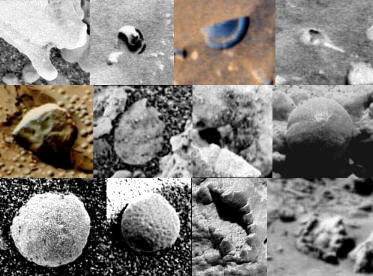 Evidence Of Not Just Life Now But Past Life On Mars: Fossils
Evidence Of Not Just Life Now But Past Life On Mars: Fossils
Winnsboro, SC (WLTX) — Charles Shults says there’s life on Mars, and he’s got the pictures he says proves it. NASA announced the discovery of water on Mars in 2006, but Shults came to that conclusion in 2004.
“The date I was first certain was February 15, 2004,” Shults says. Using the Freedom of information Act, Shults obtained more than 200,000 Mars images from NASA. After thousands of hours of reviewing the images, Shults came to a startling conclusion to some: not only is there water on Mars, but there are fossils too.
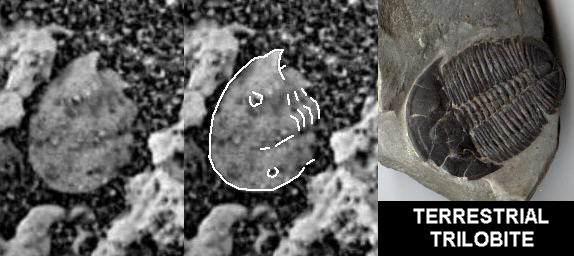 “Many of the things I’ve seen look clearly like the recent erosion, or presence of water on the surface, and many of the images show what appear to be fossil organisms, marine fossils,” Shults says. “Right now, the planet has extremely thin air, very tough living conditions, but it is wet on the surface in many areas, and it is covered with fossil remains from marine organisms.”
“Many of the things I’ve seen look clearly like the recent erosion, or presence of water on the surface, and many of the images show what appear to be fossil organisms, marine fossils,” Shults says. “Right now, the planet has extremely thin air, very tough living conditions, but it is wet on the surface in many areas, and it is covered with fossil remains from marine organisms.”
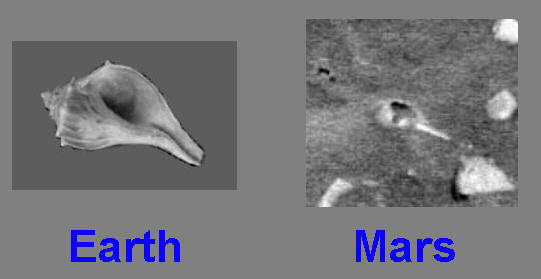 “Some of the fossils we found are seashells, and very clearly, they are identical to what we find on Earth,” he says. “There’s an absolute identical appearance to both of them.” Shults’ research has the potential to change the way people think about the universe. He’s written numerous articles and books on the subject. – Winnsboro, SC (WLTX)
“Some of the fossils we found are seashells, and very clearly, they are identical to what we find on Earth,” he says. “There’s an absolute identical appearance to both of them.” Shults’ research has the potential to change the way people think about the universe. He’s written numerous articles and books on the subject. – Winnsboro, SC (WLTX)
—————————————————————————————————-
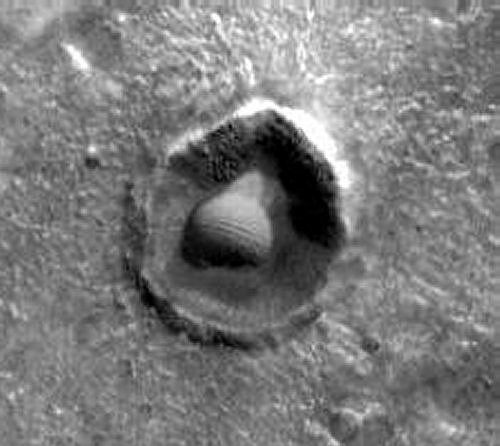 Strange Anomalies Indicating Past And Present Life On MARS Continues
Strange Anomalies Indicating Past And Present Life On MARS Continues
Strange, unexplained discoveries have been made in recent years throughout our Solar System but Mars, due to its proximity, shows us the most potential for having supported an ancient civilization in the distant past. Based on demonstrated evidence, there is a strong probability that advanced life on Mars may have been a precursor to life here on Earth.
The connection between lost ancient civilizations elsewhere in our Solar System and technology on Earth is this: If many of these structures are artificial by design then the intelligence that built them and which lived on or visited them could very well have been affiliated with Earth’s development in antiquity. Simply witness the uncanny resemblance of Martian structures and monuments to those here on Earth.
In the following video researchers show and explain several artifacts including the monolith on Mars and other surface anomalies.
Posted in The Truth About Marswith comments disabled.

 Water Flows On Mars
Water Flows On Mars